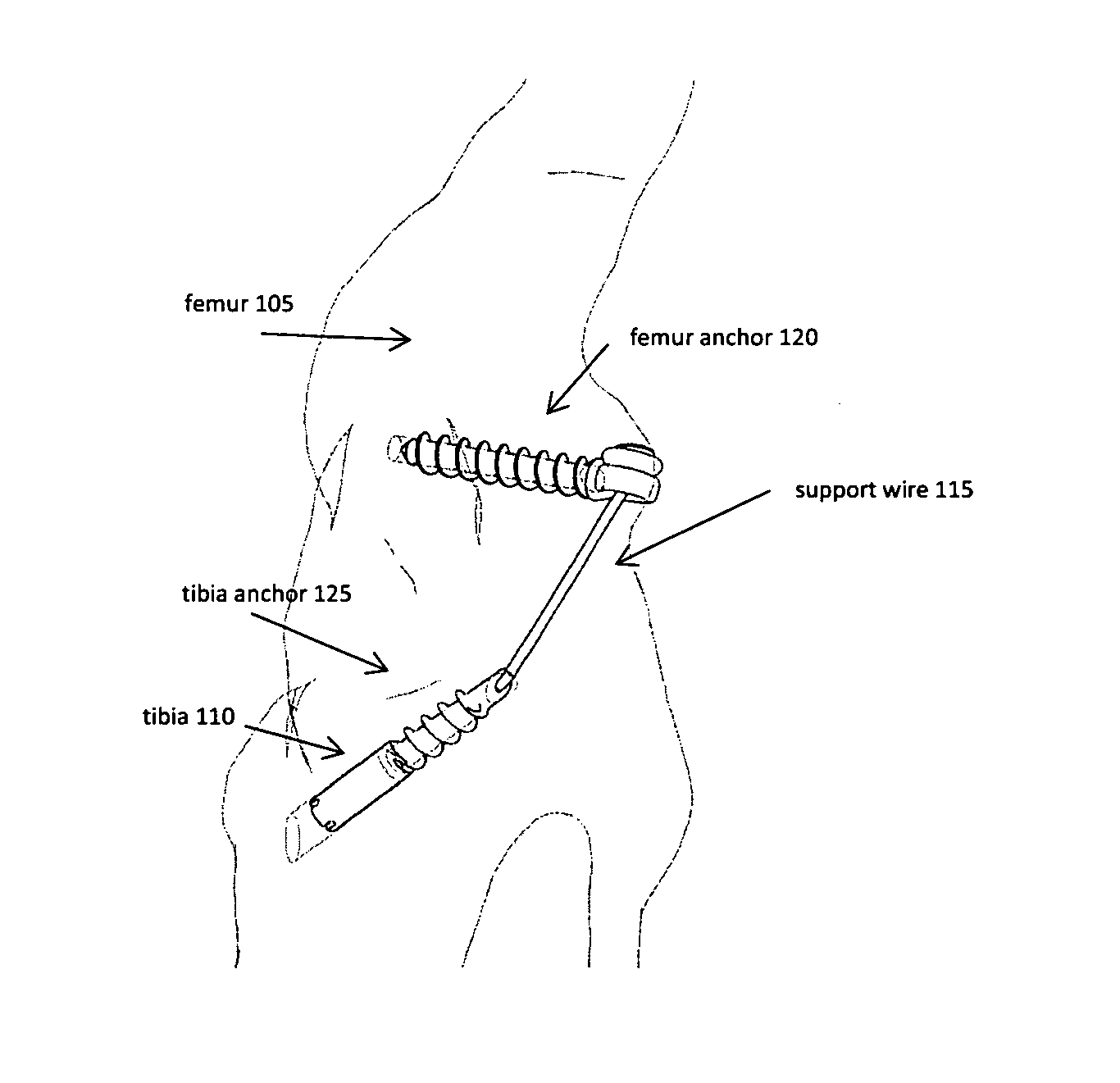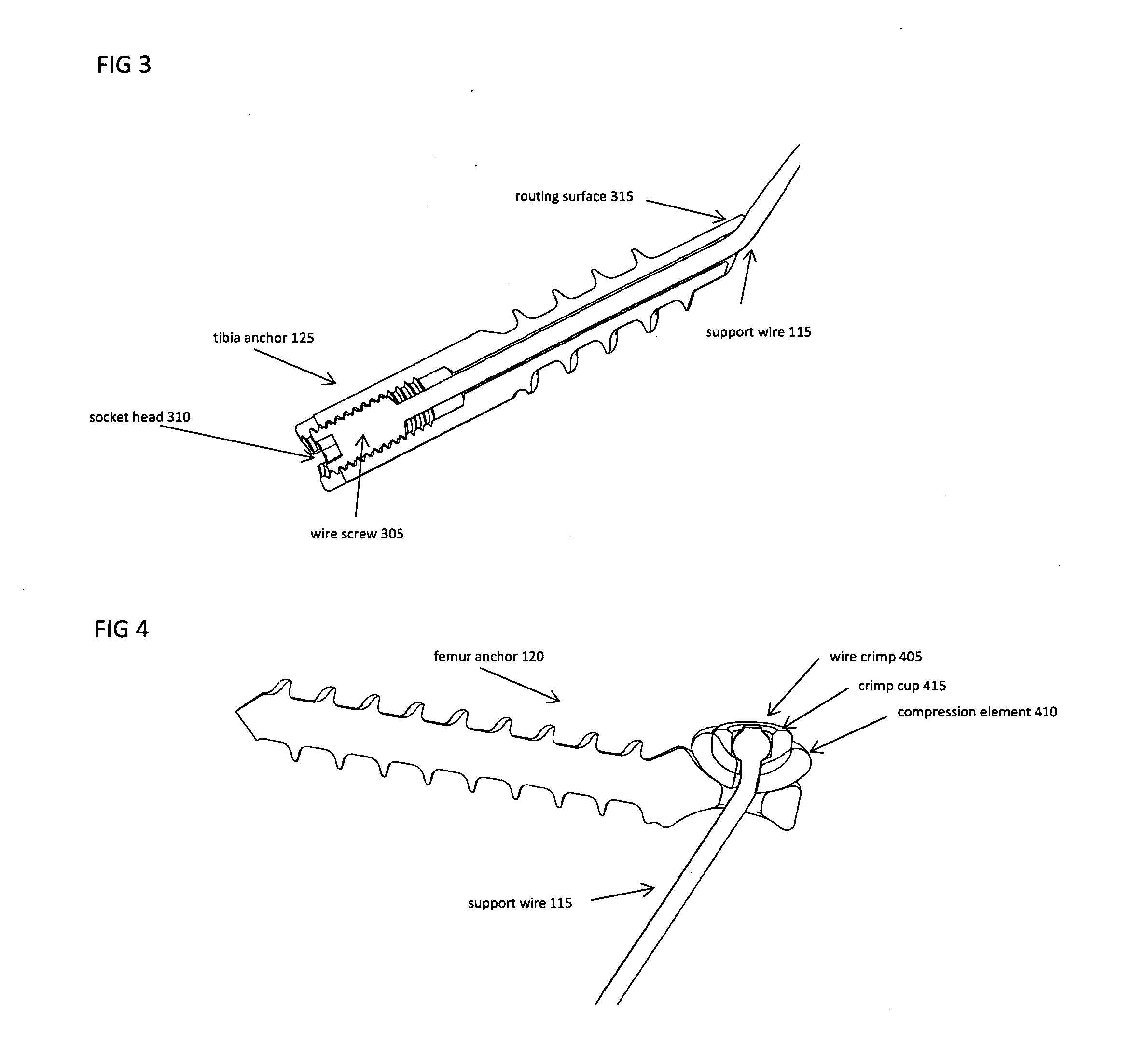Joint stability device and method
- Summary
- Abstract
- Description
- Claims
- Application Information
AI Technical Summary
Benefits of technology
Problems solved by technology
Method used
Image
Examples
Embodiment Construction
[0055]In FIG. 1 an exemplary apparatus is shown in an isometric view. A femur anchor 120 is shown extending from within the femur 105 and out of the bone profile. The femur anchor 120 has an eyelet or feature which is connected to the support wire 115 at a point which is external to the profile of the femur. A tibia anchor 125 is shown with the majority of the tibia anchor 125 within the profile of the tibia 110 as will be shown in FIG. 2. The support wire 115 is connected to the tibia anchor 125 and follows a path which may be considered similar to the patient's Cranial Cruciate Ligament (CrCL). In the following specification the term support wire is used interchangeable with the term linking element described within the claims of the invention.
[0056]In FIG. 2 the same apparatus of FIG. 1. is shown in situ within the anatomy, with the stifle joint transparent so the location and geometry of the apparatus may be seen. In this embodiment, the femur anchor has an external screw thread...
PUM
 Login to view more
Login to view more Abstract
Description
Claims
Application Information
 Login to view more
Login to view more - R&D Engineer
- R&D Manager
- IP Professional
- Industry Leading Data Capabilities
- Powerful AI technology
- Patent DNA Extraction
Browse by: Latest US Patents, China's latest patents, Technical Efficacy Thesaurus, Application Domain, Technology Topic.
© 2024 PatSnap. All rights reserved.Legal|Privacy policy|Modern Slavery Act Transparency Statement|Sitemap



